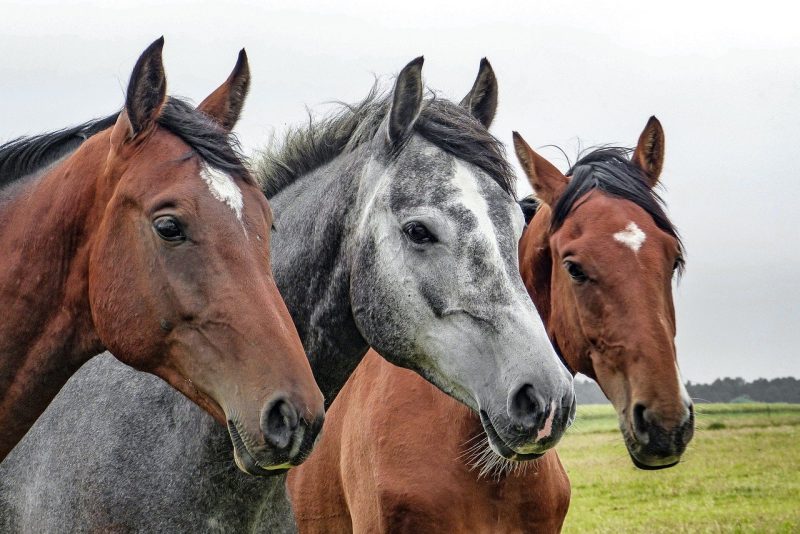After an enjoyable ride with your horse, it is important that your faithful companion can return and rest inside their stable in complete serenity and security. To guard and adequately protect them, it is wise first of all to take into consideration the greatest threats to the safety of horses: theft and fire. It may indeed be daunting to think that such ill-fated events could occur, though prevention is certainly better than cure.
While they do not guarantee the complete protection of your equine companions and of your yards, the following safety measures will give you some peace of mind when around or away from your livery stable and horses.
No smoking policy
Cigarettes do not belong inside a livery stable. Barns are packed with flammable material that can foster a fire, and hot ashes can easily instigate a blaze. Therefore, make sure that a strict no smoking policy is in place on the premises and avoid using any kind of heat sources (especially unprotected, naked flames). Additionally, ensure the muck heap is not in close proximity to stables and barns, and sweep any cobwebs that may be hanging in or around the stable.
Fire extinguisher
This particular suggestion may sound pretty banal, but it is often the most obvious safety measures that end up being overlooked. Fire extinguishers have a crucial role in fighting flames and should therefore be stored properly. In the event of a fire, if there is no opportunity to safely tame the flames with the extinguisher, call 999 immediately and evacuate the horses closest to the blaze first. As you wait for the fire brigade, ensure that your horses are kept in a secure place; if agitated or left loose, they may pose further danger or attempt to re-enter the stable.
Vary your timetable
Alongside precautions against fire hazards, it is also important to take measures to deter any ill-intentioned passer-by from stealing costly equipment or, even worse, your equine friends. One simple yet effective method is to mix up your schedule and to visit your stable at different times during the week. This way, the yard will look constantly busy, thus hopefully discouraging any potential thief that is hoping to access your barn.
Sensor-operated security lights
If anyone does attempt to take a closer look at your animals and possessions, sensor-operated security lights are an excellent way to make these intruders more visible. It will be easier to keep an eye on them and monitor their movements. What is more, the floodlights may give them ‘stage fright’ and encourage them to leave the premises.
Burglar alarms
In the event of a particularly obstinate intruder, burglar alarms can be useful to signal that someone has broken into your stable. Acoustic alarms may come in handy, especially if there are people that live nearby and who will be able to warn you. It may therefore be good to meet and make friends with your neighbours: not only will it benefit your social life, but it also means that there will always be an extra pair of eyes and ears looking after your yard and horses.
Warning signs
It may also be sensible to put up warning signs around your barn to let would-be thieves know that they are being watched. Direct attention to the fact that there is a security system in place and that the area is kept constantly under surveillance – it may just do the trick.
Keep items out of sight
Make sure to lock away your possessions and be careful not to leave tools lying around, such as ladders and wheelbarrows, that may aid intruders in carrying out their misdeeds. Also, while many horse owners tend to padlock only one side, some gates can be lifted too. To keep your equines extra safe, think about attaching an additional chain and padlock at the hinged end.
Horse identification
Evidence of indelible identification tags on horses may function as an excellent deterrent too. Thieves are likely to dismiss equines that have been freeze-marked or microchipped, as they are not as difficult to retrace if they go missing.
While freeze-marking has become uncommon nowadays, microchipping is currently a legal requirement much like with dogs. Generally inserted in the horse’s crest, a microchip contains the animal’s details and – when scanned – will help identify a lost or stolen equine. Ensure that details on the database are always up to date and ask your vet to scan the microchip during visits to check it is still working.
Finally, horse passports (which all equines should have under the Horse Passports Act 2003) may also be helpful to retrieve the missing animal. While not a permanent tag, it is indispensable to have if you ever want or need to sell or pass on your horse. Therefore, ensure that your horse’s passport is stored safely so that it does not risk getting stolen with your equine companion.
As with everything in life, there is no hiding that things can go wrong without warning. It is sensible to always be covered by a livery yard insurance package that can provide financial support when undesired eventualities occur. While it will never fill the void of losing your equine friend, it can be a vital helping hand when having to deal with the aftermath of a crime or of other unpleasant episodes.
However, by adopting the security measures mentioned above, you can rest assured that both your stable and horses are on the right track towards being as safe as they can be.
Sources:
https://www.cliverton.co.uk/policies/livery-yard-insurance/#0
https://www.worldhorsewelfare.org/advice/general-advice/preventing-horse-theft
https://www.bluecross.org.uk/pet-advice/horse-yard-safety-and-securityhttps://www.horseandhound.co.uk/features/yard-security-10-ways-to-thwart-a-thief-307716










